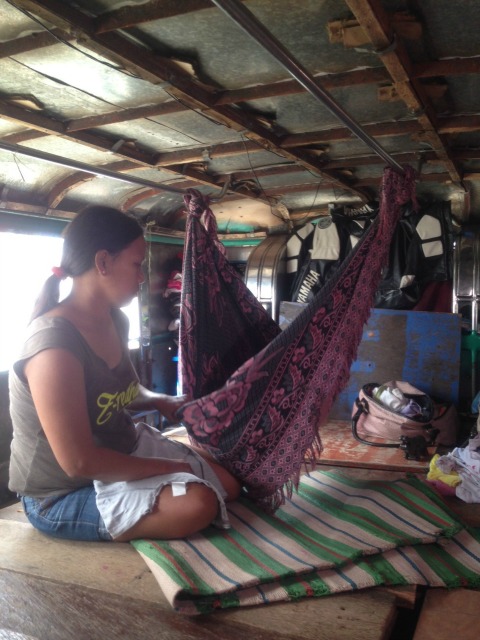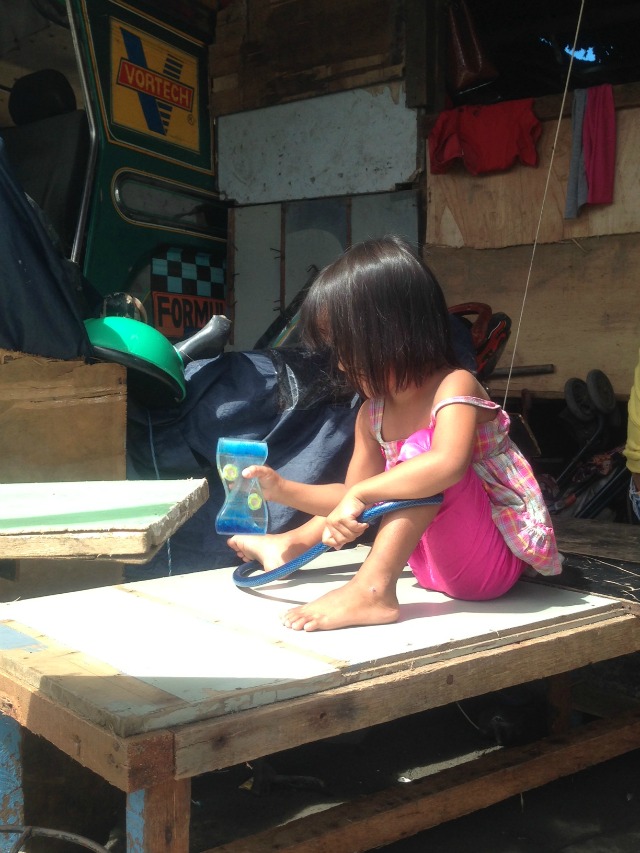Filtered By: Topstories
News
Outbreaks of deadly children’s diseases feared in Yolanda-hit areas
By CLAIRE DELFIN, GMA News
TACLOBAN CITY – Three hundred families have taken shelter at the Rizal Central School after their houses were swept away in an instant by typhoon Yolanda (known internationally as Haiyan).
They survived the typhoon’s fury, but mothers here worry about their children’s health and safety.
Rhea Ramirez took the younger of her two small children to the doctors conducting medical mission. Her baby has been downed by colds and cough since they arrived at the evacuation center.
“My baby can’t sleep very well. She is getting sick here,” Rhea worried.
Yolanda, whose intensity was three times more forceful than Hurricane Katrina, affected over 10 million people from 11,996 villages in 44 provinces in the Visayas and Southern Luzon, according to data from the National Disaster Risk Reduction and Management Council as of November 29.
As of Friday morning, the death toll rose to reach 5,598.


In Tacloban, mothers worry about their children's health after surviving super typhoon Yolanda. Victoria Tulad
The World Health Organization (WHO) is worried that without proper and immediate intervention, more deaths will follow, and children are the ones who are most at risk.
“Large numbers of non- or under-vaccinated children are at risk of contracting and spreading infectious diseases such as measles – particularly in congested areas where the homeless are now living,” said Dr. Julie Hall, WHO Representative in the Philippines.
“Measles can be deadly, especially in young children,” Hall added.
Polio, which has long been absent in the Philippines, may also resurface and can kill or paralyze children for life.
Contagious diseases can spread quickly when people are living in unsanitary and overcrowded conditions.
“These viruses can easily cause big outbreaks and deaths… The powerful tool is immunization,” said Dr. Sigrun Roesel of the WHO Extended Program on Immunization.
Thus, together with the Department of Health (DOH), WHO started a vaccination campaign to prevent the outbreaks of measles and polio among survivors of typhoon Yolanda.
The campaign targets children in areas hardest hit by the disaster – starting with the evacuation centers in the city of Tacloban and at receiving centers in Cebu, where evacuated families are finding temporary shelter.
Children under five years old are being vaccinated against polio and measles and given vitamin A drops to boost their immune systems. The campaign will be extended to children up to 15 years old if resources allow.
WHO also worked with partners to arrange for the delivery of vaccines using gas-powered and generator-powered refrigerators, freezers, vaccine-cases, cold boxes and ice packs for affected areas that have lost power. The so-called “cold chain” is necessary to keep the vaccines from being spoiled. USAID has sent six solar-driven refrigerators to Tacloban for the campaign.
Shaken but not broken
Secretary Enrique Ona of DOH said the mass immunization is part of the early phase of the rehabilitation period, which is reducing the dangers that may occur after the disaster.
“Our system is shaken but not broken,” said Ona, adding that with the support of medical partners, programs have been launched at a vital time.
He said that the outpouring of support has immensely helped the department, which suffered the following losses in the regions hit:
- 833 barangay health stations destroyed (P1.3 billion)
- 235 rural health units destroyed (P973 million)
- 81 hospitals damaged (P1.8 billion)
- regional officers affected (P60 million)
On top of DOH teams and local health responders, foreign medical and public health teams were deployed to several areas.
Amos said a major review of the appeal is slated for the first week in December and that it is expected that UN may raise the new amount of $348 million as there are still communities yet to be reached.
And the United Nations Population Fund (UNFPA), has taken the lead in developing a $110 million master plan to ensure that no woman dies giving birth and that each woman and girl is protected from violence at home and in her community.
| Category | Number of Teams | Doctors | Nurses | * Others |
| DOH Teams | 59 | 164 | 226 | 139 |
| Other local health responders | 23 | 167 | 123 | 1 |
| Foreign Teams | 53 | 148 | 126 | 836 |
| Total | 132 | 479 | 475 | 976 |
Source: DOH Team Deployment Committee Report
*Medical technologists, drivers, nursing attendants, physical therapists, dentists
Some P59 million were released to fund the DOH’s health services in the aftermath of the Yolanda disaster.
| Source | Amount (in PhP) Augmented |
| DOH | 36,350,811.70 |
| DOH Hospitals | 4,388,019.39 |
| CHDs (Center for Health Development) | 13,451,995.11 |
| Subtotal | 54,190,826.20 |
| Donations (Local/ International) | 4,891,515.60 |
| TOTAL | 59,082,341.80 |
Source: DOH Logistics Committee Report
UN raises appeal
The United Nations (UN) has increased its appeal for typhoon relief by nearly 16 percent to $348 million from $301 million, an amount that is nearly 39 percent funded at $134 million, so far.
UN Humanitarian Coordinator Valerie Amos made two visits to Tacloban to personally assess the devastation wrought by Yolanda on November 8.
 “A massive disaster like this requires a massive response,” Amos told a news conference at UN Headquarters in New York and was quoted in a press release issued on the UN website.
“A massive disaster like this requires a massive response,” Amos told a news conference at UN Headquarters in New York and was quoted in a press release issued on the UN website.

Children are most at risk in disaster areas, said the World Health Organization. Victoria Tulad
“Much more needs to be done. Food, clean water and shelter remain the top priorities. Vast numbers of vulnerable people are still exposed to bad weather and need basic shelter. Families who have lost their homes will need substantial longer-term support from the international community to ensure they have the means to rebuild their houses.”
Amos said a major review of the appeal is slated for the first week in December and that it is expected that UN may raise the new amount of $348 million as there are still communities yet to be reached.
The UN World Food Programme has reached over 2.5 million people with basic food aid.
And the United Nations Population Fund (UNFPA), has taken the lead in developing a $110 million master plan to ensure that no woman dies giving birth and that each woman and girl is protected from violence at home and in her community.
UNFPA estimates that there are currently 230,000 pregnant women in affected areas while 835 women are giving birth every day with very limited access to emergency obstetric care.
The master plan will highlight the set up of 80 temporary maternity wards, two “hospitainers” (emergency obstetric theaters in containers) and 34 ambulances, including motorbikes.
Women and girls of child-bearing age will have access to basic hygiene items, such as sanitary pads, underwear and soap, through the distribution of 105,000 dignity kits in evacuation centres. An additional 110,000 kits will be distributed to pregnant and breastfeeding women. UNFPA will also ensure that 4,000 women every week have access to reproductive health care services by providing equipment and repairing infrastructures in all eight affected provinces.
Based on national data, an estimated 375,000 women and girls in their lifetime would have experienced sexual violence in the affected areas prior to the disaster. Without adequate attention and protection measures, this number could increase by 65,000.
“In the rush to provide assistance, women and girls were invisible,” says Ugochi Daniels, Chief of UNFPA’s Humanitarian Response “we now must ensure that their needs are met so that every woman and every girl affected by Typhoon Haiyan is protected and lives with dignity.” —with reports from Victoria Tulad/KG, GMA News
More Videos
Most Popular



